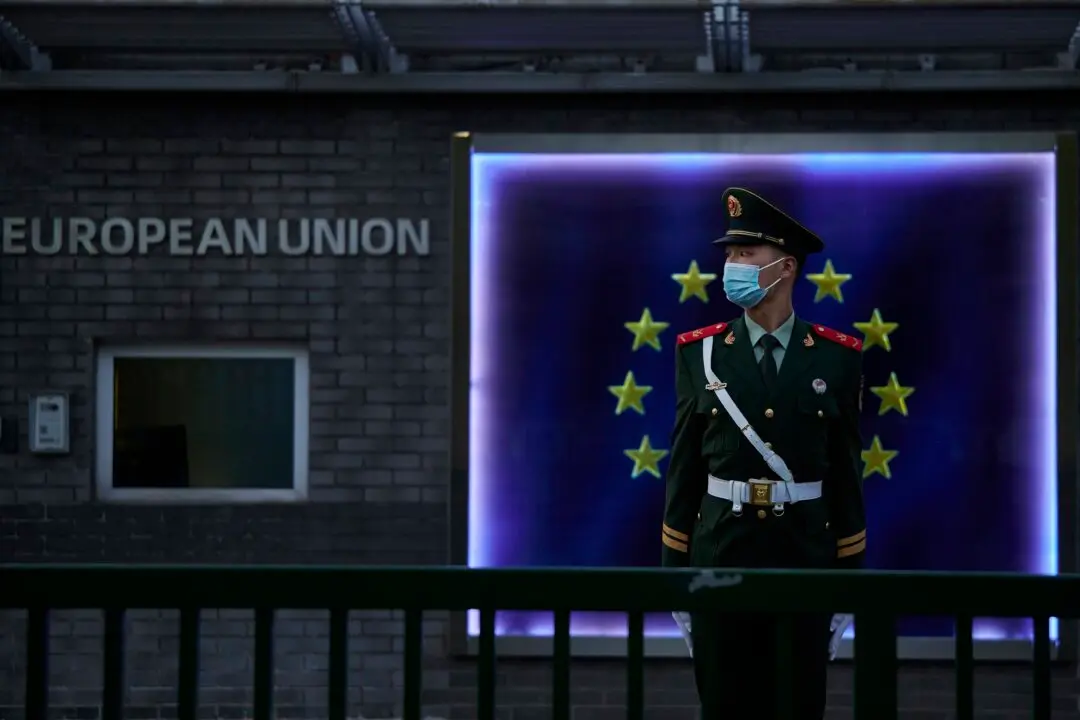Commentary
The Pakistan Air Force claimed to have shot down several Indian fighter jets on May 7. The two nuclear powers agreed to a cease-fire on May 10, for which U.S. President Donald Trump apparently gets credit.
“I said, ‘Come on, we’re going to do a lot of trade with you guys. Let’s stop it. Let’s stop it. If you stop it, we’ll do a trade. If you don’t stop it, we’re not going to do any trade,’” Trump told reporters at the time.
As powerful democracies, the United States, France, and India would make great allies to deter China and Pakistan, the latter of which is mostly run by generals. If Pakistan democratized and stopped harassing India, it could also be included.
Trump suggested that Pakistan and India have a “nice dinner together,” which is a great idea. We should make every attempt to encourage Pakistan’s leadership to move toward peace.
But the deadly damage done by an alleged Pakistan-supported terrorist group, The Resistance Front (TRF), is done. It claimed responsibility for two attacks against which the Indian military retaliated—one in 2019 and the most recent on April 22 that killed 26 civilians in Indian-controlled Kashmir.
“TRF is a proxy for the Lashkar-e-Taiba, an Islamist terrorist group headquartered in Pakistan—and allegedly supported by Pakistan’s Inter-Services Intelligence Agency—that is on the United States’ list of Foreign Terrorist Organizations,” explained Manjari Chatterjee Miller of the Council on Foreign Relations.
The damage done by Pakistan’s warplanes, purchased from China, is also permanent. Pakistan claimed it used its Chinese J-10C fighters and PL-15 air-to-air missiles to down three of France’s most sophisticated fighters, the Dassault Rafale F3R. India bought 36 of them for $9 billion in the 2010s, including ground support equipment. China’s J-10C, which downed the three Rafale’s operated by India, is not its most sophisticated.
The downing of France’s F3R weakens democracy’s deterrence against the Chinese Communist Party (CCP). China and Pakistan are close, calling each other “iron brothers.” The United States and India have improved ties recently, while Pakistan is still mired in anti-Americanism and pro-China public sentiment.
In a Pew survey of Indians last year, 51 percent viewed the United States favorably, while only 18 percent viewed China favorably.
A 2024 Gallup survey of Pakistanis, however, found that 63 percent had a positive perception of China. The Pakistani public has long had a relatively negative view of the United States.
Defense analysts in Taiwan watched the downing of French planes with concern, given CCP leader Xi Jinping’s plan to ready the People’s Liberation Army (PLA) for an invasion of Taiwan by 2027. Taiwan could be the J-10C’s next target.
The Indian downings could have been due to pilot error. But France’s Dassault was nevertheless humiliated. Countries that had previously never considered buying “inferior” Chinese fighter technology may have reconsidered their position.
Within days of the J-10C’s success, the market capitalization of the jet’s maker, AVIC Chengdu Aircraft Corporation, soared by more than 60 percent and billions of dollars. Uzbekistan, which was deciding between buying fighters from China or France, certainly took notice.
The United States supplies F-16 fighters to Pakistan, but restricts their use to counter-terrorism. China uses this as a selling point for its own fighters, which are unrestricted from attacking India. This fits Beijing’s adversarial relationship with New Delhi, including over territory in the Himalayas. The Chinese regime is also likely upset that India is replacing at least some of China’s export-oriented manufacturing power.
It is even conceivable that Beijing would encourage Pakistan’s violence against India. The violence destabilizes the region, discourages investment in India, and takes the focus away from the CCP’s human rights abuses and territorial aggression.
Russia is trying to sell Sukhoi Su-57 jets to India. That New Delhi persists in its friendly attitude toward Russia, including through joint membership in China’s Shanghai Cooperation Organization (SCO), arguably makes little sense from the perspective of promoting democracy. The only argument in favor is that India, through its influence at the SCO, can hamstring what could otherwise turn into an anti-India alliance.
India, as a democracy, ought to ally with Western democracies and purchase the world’s only military jet technologies—for example, the U.S. F-35 and F-22—that can compete with China’s most advanced fighters. The politicians in New Delhi should reject inferior Russian jets, especially since Russia is close to China, which is close to Pakistan.
Russia could even install kill switches in their planes or missiles and make them inoperative just when most needed by India’s armed forces, which would be a conflict with China, an escalation with Pakistan, or both. Moscow might do this at the request of Beijing, upon which Moscow is dependent for energy exports.
It is in the United States’ interests to more closely ally with India. As noted by Tunku Varadarajan, a fellow at the American Enterprise Institute, “The more secure you make India against Pakistan, the freer India will be to help take on China.” So U.S. national security interests are served by giving India a helping hand against Pakistan’s terrorists.
But India is not yet a perfect customer for the most advanced U.S. fighters. New Delhi unreasonably demands technology transfer along with the planes. That is unlikely because, as noted above, it is still too friendly with Russia, and unfairly chilly toward Western democracies, including the United States and the United Kingdom.
We don’t want our F-35 or F-22 technology to fall into Russian hands. So if India wants the best planes, it likely must give something up. That is, first and foremost, its close relations with Russia, plus possibly its membership in the Shanghai Cooperation Organization. After that, the sky is the limit for closer American, French, and Indian relations.





